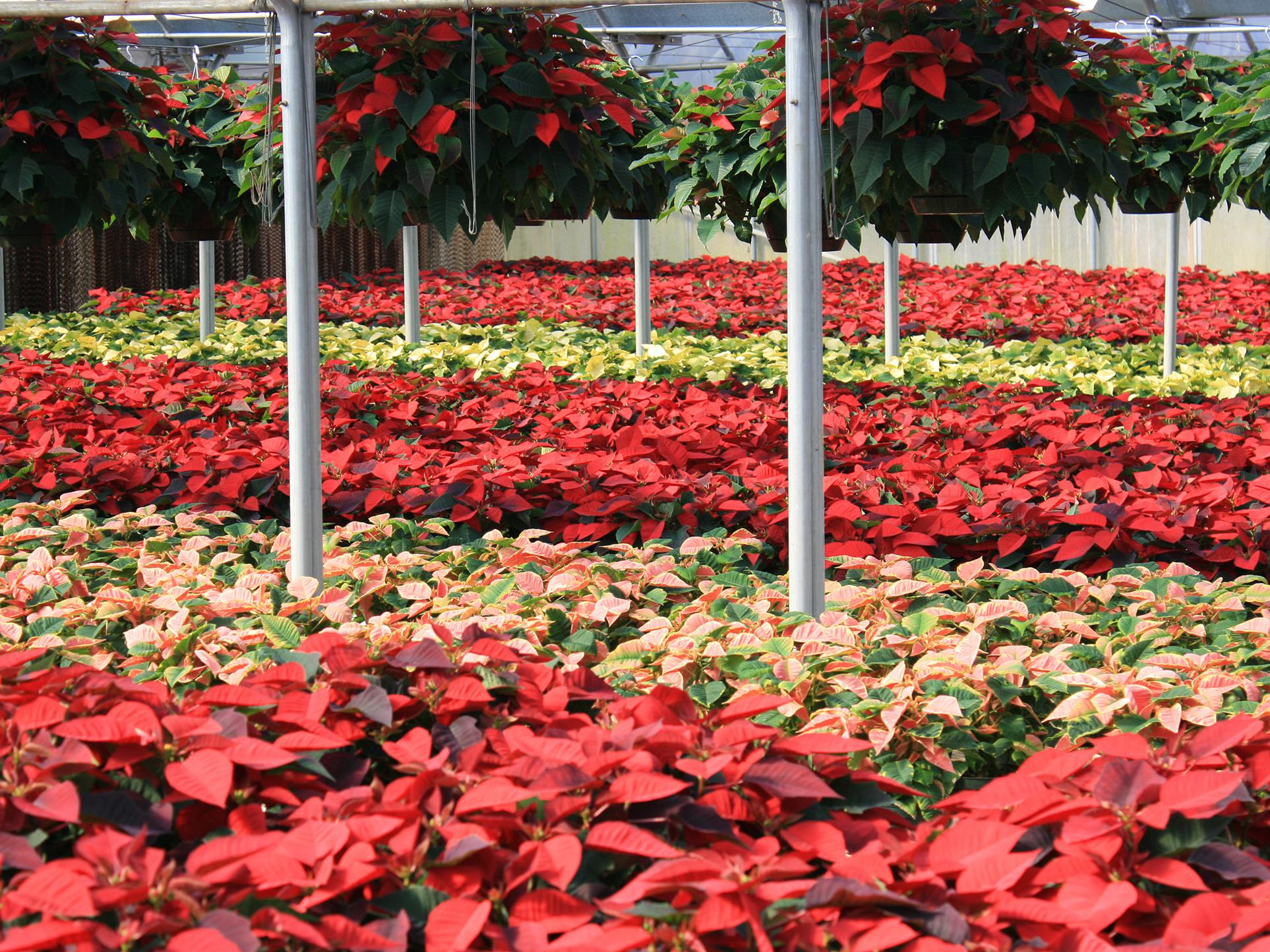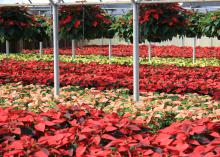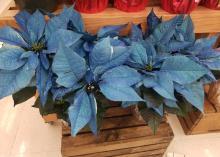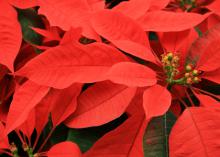Information Possibly Outdated
The information presented on this page was originally released on December 3, 2018. It may not be outdated, but please search our site for more current information. If you plan to quote or reference this information in a publication, please check with the Extension specialist or author before proceeding.
Select, care well for Christmas poinsettias
It’s that time of year again for shopping, eating, delivery trucks and poinsettias. Yep—it’s the Christmas season.
Now is a great time to get the best selection of poinsettias. They’re plentiful in a wide variety of sizes and colors sure to fit into any holiday decorating scheme.
The range of available poinsettia colors is truly remarkable. Poinsettia is no longer just that red Christmas plant. We can purchase them in white, pink, maroon, speckled and marbled selections. This year, I noticed a resurgence in plants painted and dyed in totally nontraditional poinsettia colors.
I’m always amazed at the beautiful colors, but my favorite has to be the traditional red.
The colors we enjoy are not flowers but modified leaves called bracts. The true flowers are those little pea-like structures called cyathia.
Take your time when shopping for poinsettias. Don’t just grab the first pretty plant you find.
Remember that not all poinsettias are the same, especially when they are displayed tightly packed on racks or benches. Look for plants that are compact with good branching. Don’t be afraid to carefully pick plants out of the crowd and look at them.
But don’t be rough, especially if the plants are really crowded. Poinsettia branches can easily break, and you know the old adage, “You break it, you buy it.”
Look for signs of stem and branch breakage before you purchase them; the sleeves that protect many poinsettias can hide these defects. I like to buy poinsettias that are not sleeved and then have a protective sleeve put on at the check-out counter.
Pay particular attention when removing these paper or plastic sleeves. Never try to slide the shipping sleeves off because this has the potential to damage the plant. Always tear or cut the sleeve off your plants.
If you’re going to be on an all-day shopping trek, plan to buy your poinsettias last. Don’t leave them in a cold or hot car all day.
Here are some care tips to help you keep your poinsettia looking good for the entire holiday season.
Poinsettias need at least six hours of indirect sunlight and comfortable room temperatures. If you’re comfortable, then the poinsettias will be happy. That poinsettia might look great by the front door when guests arrive, but the sudden temperature changes from drafts, either cold or warm, will cause the leaves and bracts to drop.
Poinsettias are sensitive to wet feet, and root rot sets in very quickly, so don’t overwater. It’s easy to tell if your plant needs water. Either feel the top of the potting mix for dryness or pick the pot up to get a sense of the weight. Light pots need water.
To water, remove the decorative sleeve and set the pot in a pan of water in the kitchen sink. Lift it out of the water, and when it has finished draining, replace the decorative sleeve. I also like to use a saucer to protect my furniture from any moisture.
Despite the alarming information folks share on social media, poinsettias are not poisonous to our pets.
According to the ASPCA Animal Poison Control, eating poinsettia leaves will induce only GI tract irritation. A more likely scenario would be you getting a skin rash or contact dermatitis from handling poinsettias, so always wash your hands after handling your poinsettia.





